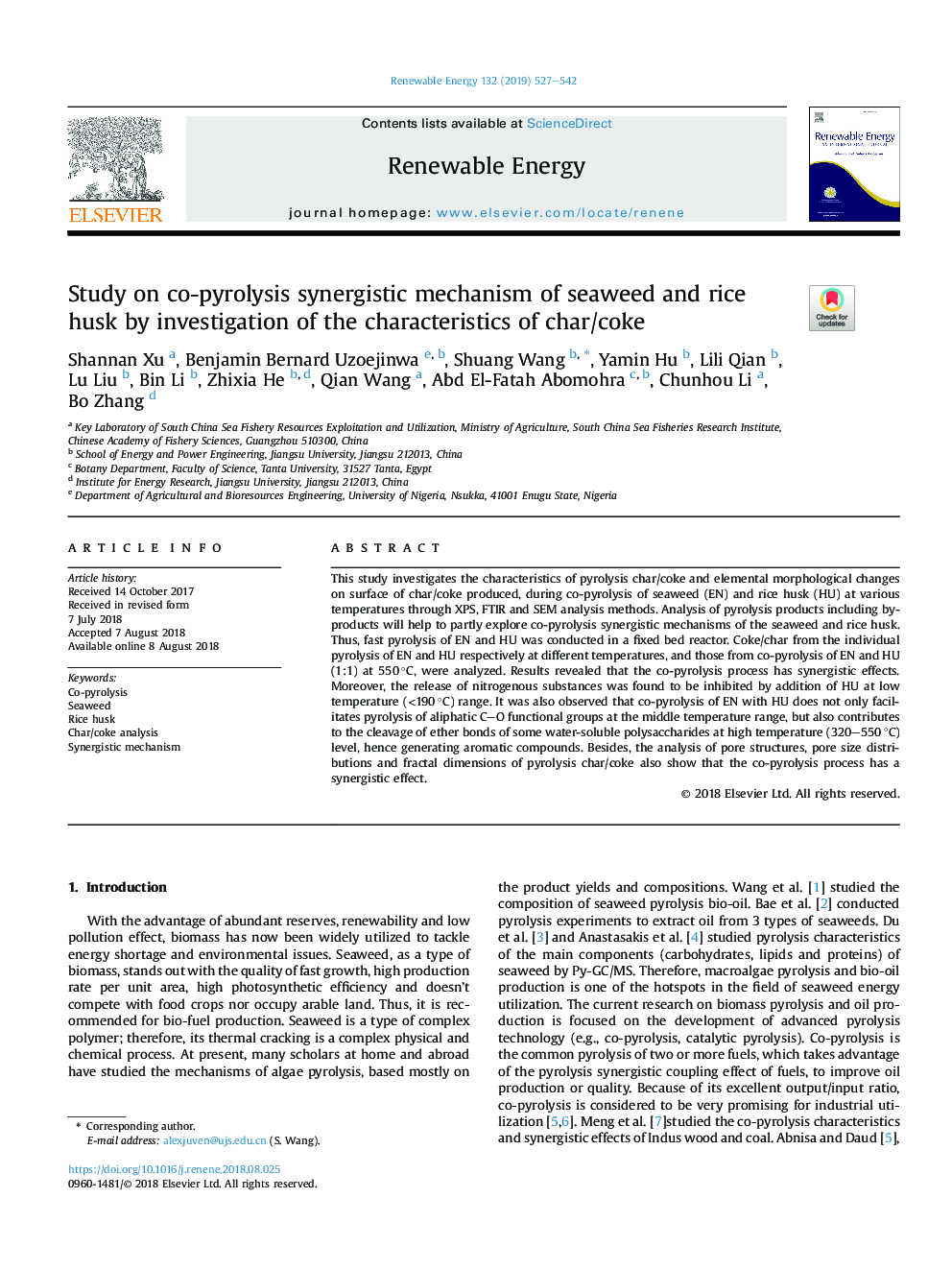| Article ID | Journal | Published Year | Pages | File Type |
|---|---|---|---|---|
| 6763590 | Renewable Energy | 2019 | 16 Pages |
Abstract
This study investigates the characteristics of pyrolysis char/coke and elemental morphological changes on surface of char/coke produced, during co-pyrolysis of seaweed (EN) and rice husk (HU) at various temperatures through XPS, FTIR and SEM analysis methods. Analysis of pyrolysis products including by-products will help to partly explore co-pyrolysis synergistic mechanisms of the seaweed and rice husk. Thus, fast pyrolysis of EN and HU was conducted in a fixed bed reactor. Coke/char from the individual pyrolysis of EN and HU respectively at different temperatures, and those from co-pyrolysis of EN and HU (1:1) at 550â¯Â°C, were analyzed. Results revealed that the co-pyrolysis process has synergistic effects. Moreover, the release of nitrogenous substances was found to be inhibited by addition of HU at low temperature (<190â¯Â°C) range. It was also observed that co-pyrolysis of EN with HU does not only facilitates pyrolysis of aliphatic CO functional groups at the middle temperature range, but also contributes to the cleavage of ether bonds of some water-soluble polysaccharides at high temperature (320-550â¯Â°C) level, hence generating aromatic compounds. Besides, the analysis of pore structures, pore size distributions and fractal dimensions of pyrolysis char/coke also show that the co-pyrolysis process has a synergistic effect.
Related Topics
Physical Sciences and Engineering
Energy
Renewable Energy, Sustainability and the Environment
Authors
Shannan Xu, Benjamin Bernard Uzoejinwa, Shuang Wang, Yamin Hu, Lili Qian, Lu Liu, Bin Li, Zhixia He, Qian Wang, Abd El-Fatah Abomohra, Chunhou Li, Bo Zhang,
